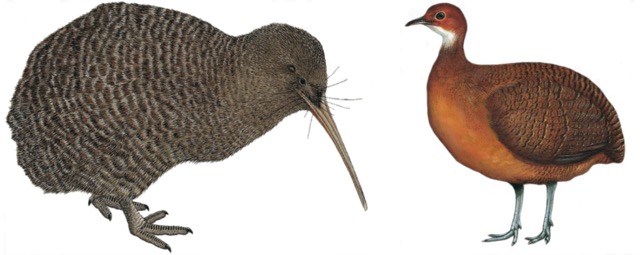CONVERGENT REGULATORY EVOLUTION AND THE ORIGIN OF FLIGHTLESSNESS IN PALAEOGNATHOUS BIRDS

CASUAL SEMINAR IN BIODIVERSITY AND EVOLUTION

A major question in evolutionary biology, one posed in the mid-1970s by Allan Wilson, is whether genic or regulatory evolution underlies the diversity of phenotypes observed in nature. An additional question that Allan Wilson asked was whether convergent phenotypes are driven by convergence at the level of the genome. We have approached these questions by using comparative genomics to understand the genomic basis of flightlessness in palaeognathous birds, which include the flightless ratites (emu, ostrich, kiwi, etc) and the volant tinamous of the New World. In contrast to the early trees produced by Allan Wilson and others, recent phylogenetic work suggests that tinamous are embedded within the ratite radiation and that flight was likely lost multiple times within the group. We have produced 10 new high-quality palaeognath genomes and aligned these to 32 additional genomes from birds and non-avian reptiles in an easily searchable genome browser. We called ~1.5 million conserved non-exonic elements (CNEEs) in these genomes, of which ~284,000 were greater than 50 bp, and identified those that have undergone relaxation or acceleration in individual ratite lineages or convergently in multiple ratite lineages. We identified ~15,000 CNEEs undergoing acceleration in at least one ratite lineage, a CNEE subset that is enriched for elements that have arisen since the avian ancestor, as well as significant numbers of CNEEs and coding regions that have undergone acceleration or adaptive evolution in multiple ratite lineages. We find that the genes nearest to convergently accelerating CNEEs are enriched for roles in development and that many of these show intriguing patterns of expression in developing chickens. Current work is focused on functionally examining the role of specific CNEEs in driving gene expression in chickens, emus and rheas. Overall our results suggest a strong role for non-coding regulatory evolution in the origin of flightlessness in palaeognathous birds.
Professor Edwards studies diverse aspects of avian biology, including evolutionary history and biogeography, disease ecology, population genetics and comparative genomics. He has conducted fieldwork in phylogeography in Australia since 1987 and conducted some of the first phylogeographic analyses based on DNA sequencing. In the last 10 years, Prof. Edwards has contributed to the development of novel methods for estimating phylogenetic trees from multilocus DNA sequence data. His recent work uses comparative genomics in diverse contexts to study macroevolutionary patterns in birds, including the origin of feathers and the evolution of flightlessness.
He has served as President of the Society for the Study of Evolution, the Society of Systematic Biologists, and the American Genetic Association. He is a member of the American Academy of Arts and Sciences (2009), a Fellow of the American Association of the Advancement of Science (2009), and a member the National Academy of Sciences (2015).
[Host: Martim Melo, Tropical Biology]
Image credits: Francesc Jutglar, Handbook of the Birds of the World - Lynx Editions